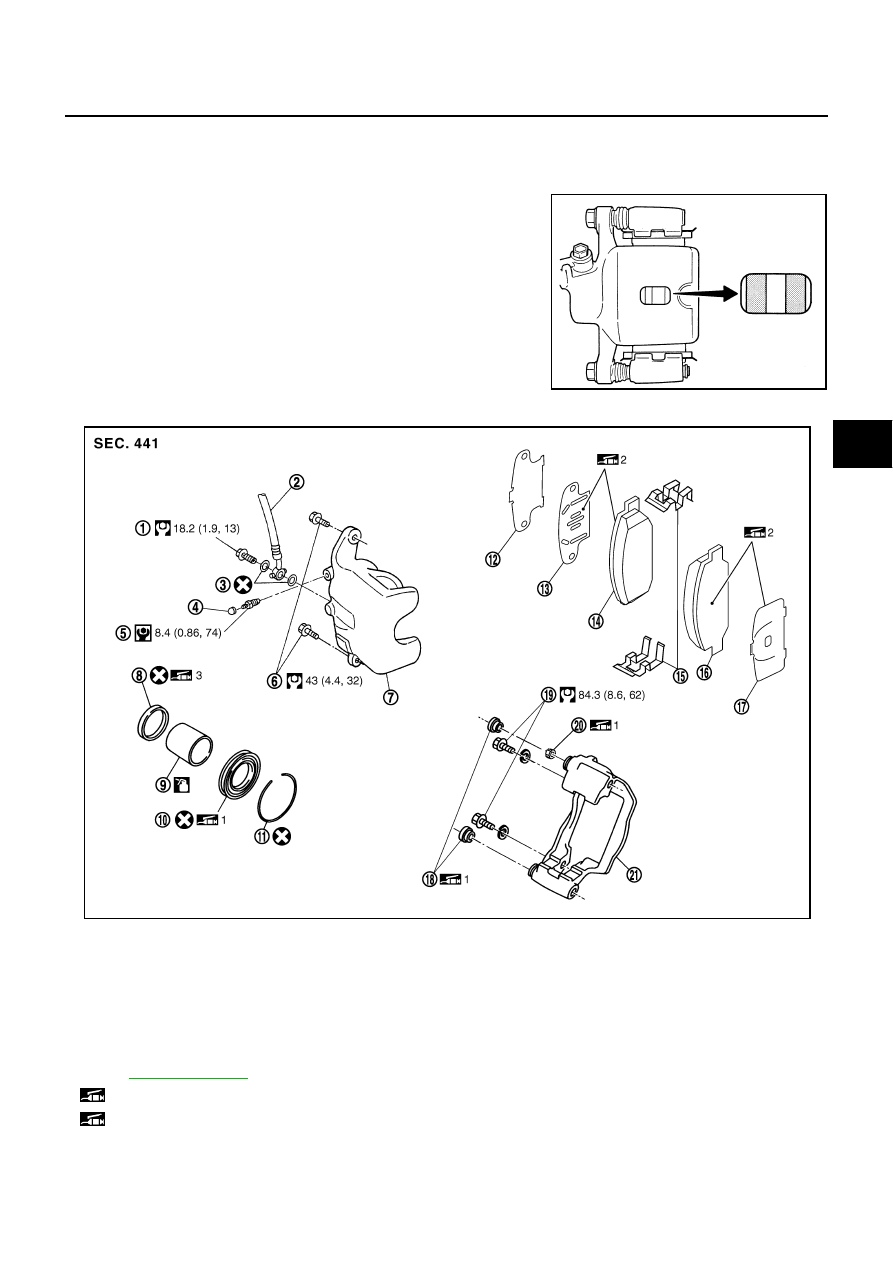Infiniti G35 (V35). Manual - part 233

REAR DISC BRAKE
BR-27
C
D
E
G
H
I
J
K
L
M
A
B
BR
REAR DISC BRAKE
PFP:44000
On-Vehicle Inspection
NFS000K0
PAD WEAR INSPECTION
●
Inspect the thickness from an inspection hole on cylinder body.
Use a scale for inspection if necessary.
Components
NFS000K1
Standard thickness
: 8.5 mm (0.335 in)
Repair limit thickness
: 2.0 mm (0.079 in)
BRA0010D
1.
Union bolt
2.
Brake hose
3.
Copper washer
4.
Cap
5.
Bleed valve
6.
Sliding pin bolt
7.
Cylinder body
8.
Piston seal
9.
Piston
10.
Piston boot
11.
Retaining ring
12.
Inner shim cover
13.
Inner shim
14. Inner pad
15.
Pad retainer
16.
Outer pad
17. Outer shim
18.
Slide pin boot
19.
Torque member mounting bolt
20. Bushing
21.
Torque member
Refer to
and the followings for the symbols in the figure.
1: Apply rubber grease.
2: Apply PBC (Poly Butyl Cuprysil) grease or silicone-based grease.
PFIA0686E